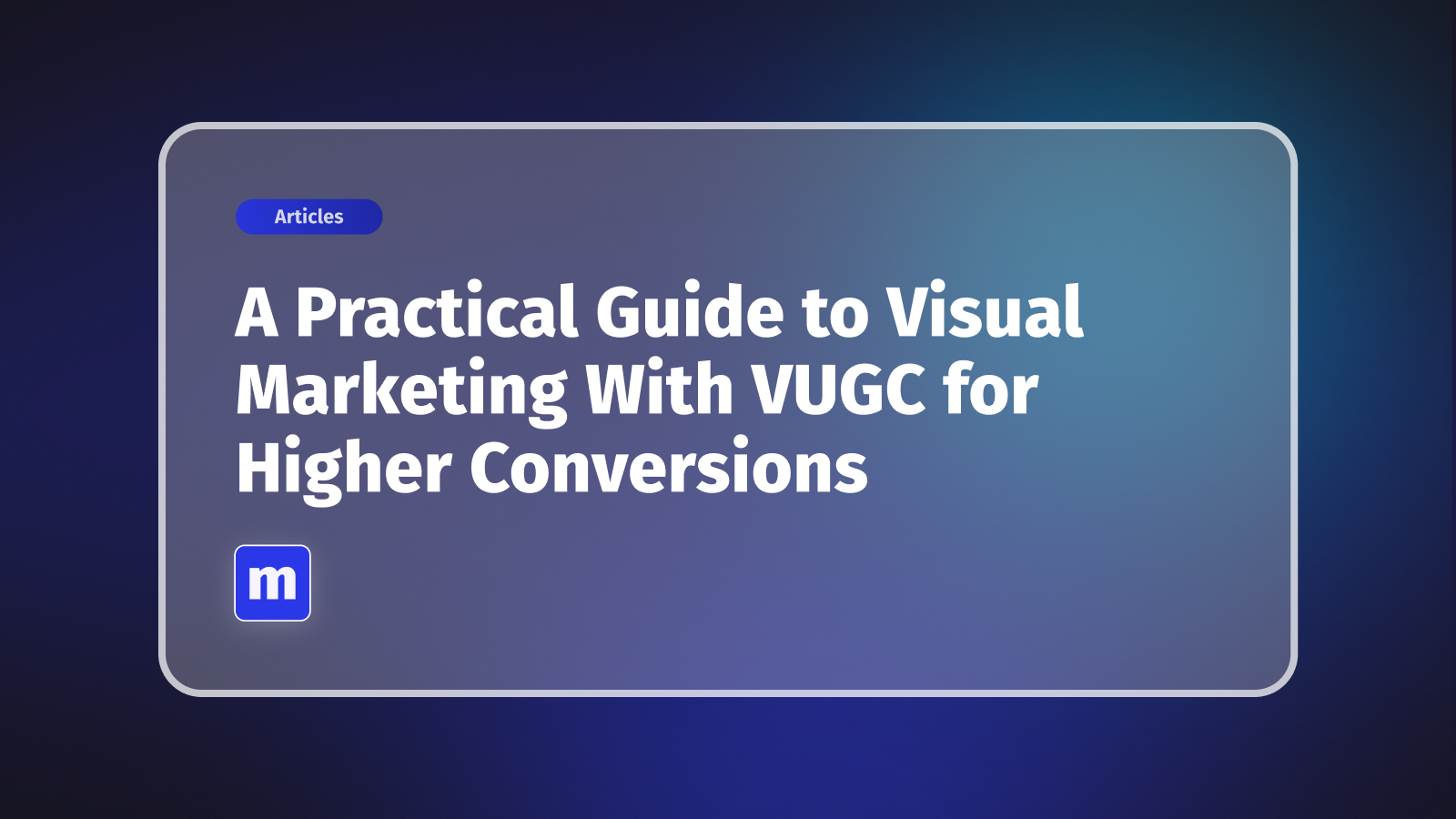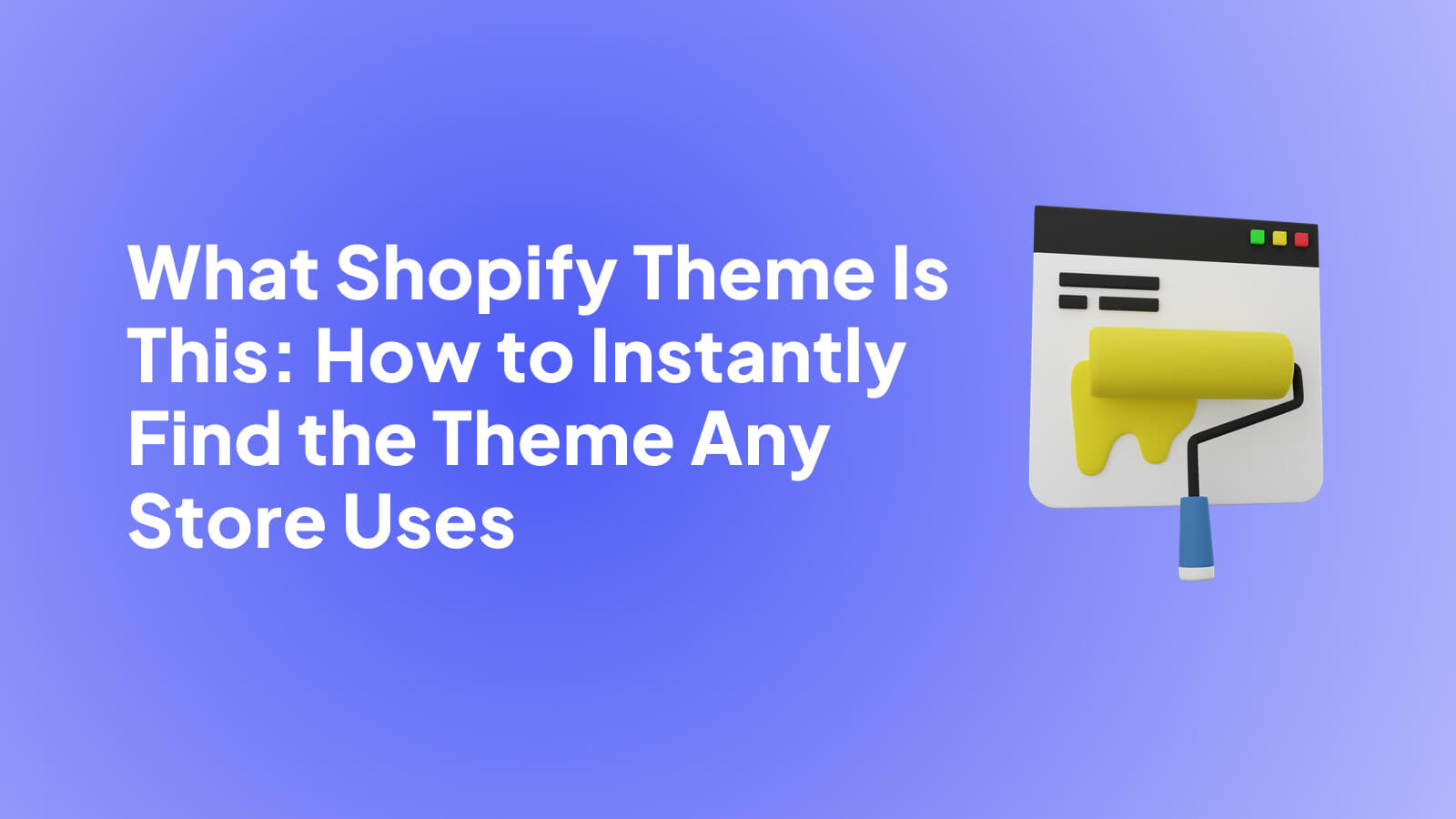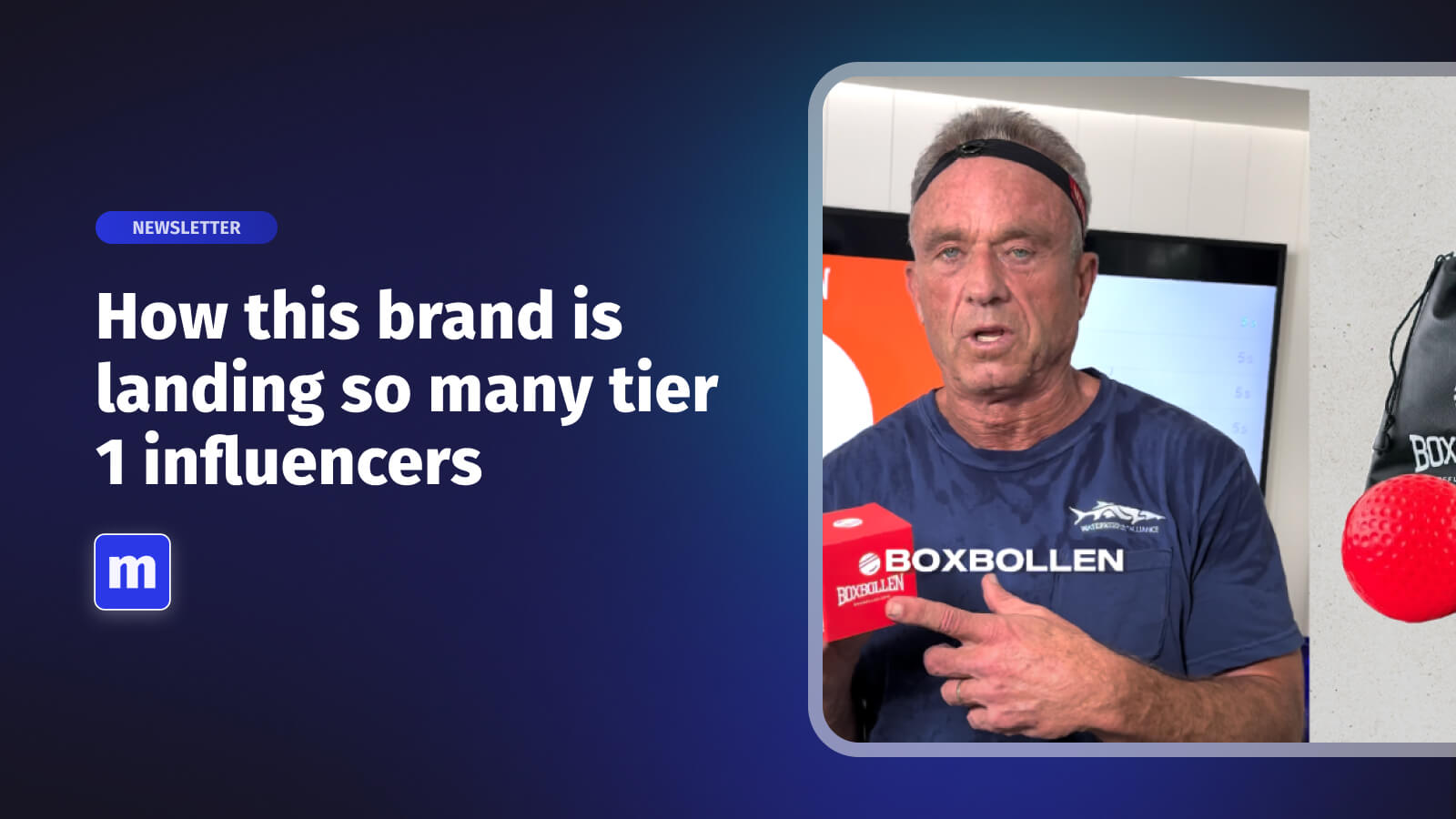
Understanding What's Really Driving Your Sales
Before you start testing new sales tactics, you need a clear picture of what’s already working—and what’s not. Many Shopify merchants get caught up in "vanity metrics" like website traffic or social media likes. While those numbers might feel good, they don’t actually pay the bills. The real key to how to increase Shopify sales is learning to read the story your data tells about your customers.
The most successful store owners I’ve met are practically living inside their Shopify Analytics. They aren't just glancing at the dashboard; they're digging into the reports to uncover the hidden patterns and friction points that are quietly costing them sales. This deep dive is the first real step toward building a strategy that works. It’s not just about getting more traffic; it’s about converting the traffic you already have and making every visitor’s experience better.
Your Store's Health Check: Key Metrics That Matter
Think of your store’s analytics as a health report. You need to know which numbers show a strong pulse and which ones signal a problem. Focusing on a handful of key performance indicators (KPIs) will give you a much clearer path to growth than trying to track every metric under the sun. This focus on actionable data is a core part of a strong ecommerce content strategy and business plan.
Start by looking for the friction points in your customer journey. Where are people dropping off? A high number of abandoned carts, for example, could point to unexpected shipping costs or a clunky checkout process. Low conversion rates on certain product pages might mean your descriptions aren't compelling or your images aren't clear enough.
This analytical approach pays off. In the third quarter of 2024, Shopify's total revenue grew by 20.7% year-over-year, hitting $2.161 billion. This growth is fueled by merchants using the platform’s built-in tools to improve customer engagement and boost conversion rates. You can find more details about the platform's impressive growth on Charle Agency. The data and tools are there—you just need to use them.
To get a true read on your store's health and find growth opportunities, it helps to track a few critical metrics. This table breaks down what you should be aiming for.
Key Shopify Performance Metrics to Track
Essential metrics every Shopify merchant should monitor to understand their sales performance and identify growth opportunities.

Monitoring these figures will quickly tell you where to focus your efforts. For example, a great conversion rate but a low AOV suggests you should work on upselling and bundling. A high cart abandonment rate means your checkout process needs a closer look.
Transforming Your Store Into a Sales Machine
Your store’s analytics tell you what is happening, but it's your store’s design and user experience that reveal why. A confusing layout, slow-loading pages, or vague product descriptions can stop a sale cold. Turning your store from a simple product catalog into a sales powerhouse means looking at every single click from your customer's point of view. It’s less about chasing flashy design trends and more about building a smooth, trustworthy path from the first look to the final checkout.
A great place to start is by looking at how top-tier brands present their products. Pay attention to their clean layouts, high-quality images, and navigation that just makes sense.
The example above shows how a strong visual hierarchy and clear calls-to-action steer the user's focus right where it needs to be—on the products. This isn't just about looking pretty; it's a smart design choice that removes roadblocks and encourages browsing, which naturally leads to more sales.
Building Trust and Easing Friction
When someone lands on your site for the first time, their first thought is, "Can I trust this store?" You have to answer that question immediately and with confidence. Trust signals are small but mighty elements that help build that buyer confidence.
- Display Reviews Prominently: Social proof is your best friend. Make sure customer reviews and star ratings are featured directly on your product pages. Since 93% of customers look for reviews before they buy, you need to make them impossible to miss.
- Showcase Clear Policies: Don’t make customers hunt for your shipping and return policies in a hard-to-find footer link. A straightforward, fair return policy can actually boost conversions by assuring people they won’t get stuck with a product they don’t love.
- Use High-Quality Visuals: Professional product photos and videos are non-negotiable. They do more than just show off your product; they signal that you're a serious, professional brand. For a closer look at what works, check out our insights on effective ecommerce video production.
Optimizing the Path to Purchase
Once you’ve earned a customer's trust, your next job is to make buying from you as easy as possible. Every extra click or confusing step in the checkout process is another reason for them to abandon their cart. Here’s where to focus your energy:
Mobile-First Design: A huge chunk of e-commerce traffic comes from phones, so your store needs to work flawlessly on a small screen. Test every page, button, and form on your own phone. If it feels clunky to you, it’s costing you money.
Page Speed: Did you know a one-second delay in page load time can drop conversions by 7%? Use tools to check your site speed and compress your images, as they are often the biggest performance hogs.
Streamlined Checkout: The best checkout experience is the one customers barely notice. Enable express checkout options like Shop Pay or Apple Pay. These one-click options can increase conversion rates by over 1.7x compared to a standard checkout, allowing repeat customers to complete their purchase in seconds. This simple change is a powerful way to get back sales that would otherwise be lost to frustration.
Building Your Multichannel Sales Empire

Depending only on your website for sales is like opening a physical store but forgetting to put up a sign. To see real revenue growth, you need to meet customers where they already spend their time. This involves moving beyond your .com and developing a multichannel sales strategy. The idea isn't to be everywhere at once, but to strategically feature your products in the digital spaces your ideal customers love.
Think of it like setting up pop-up shops all over the internet. Each channel, whether it's Instagram, Facebook Marketplace, or even Amazon, becomes a new front door to your business. This isn't just for big-box retailers anymore; it's a fundamental growth strategy. In 2024, 90% of Shopify merchants connected their stores to at least two sales channels, proving how common this approach has become. This diversification is a major reason why Shopify-powered brands can achieve such massive sales figures, hitting around $4.2 million per minute during big events like Black Friday. You can find more interesting Shopify statistics on Red Stag Fulfillment.
Choosing Your Channels Wisely
The secret is to pick platforms that fit your brand and products, rather than spreading your efforts too thin. Don't chase every new trend. Instead, direct your energy where it will make the biggest difference.
- Social Commerce (Instagram & Facebook): These platforms are fantastic for visual products like fashion, beauty, and home decor. They seamlessly turn casual scrolling into a shopping opportunity. By connecting your Shopify catalog, you can create shoppable posts and stories, letting customers buy directly from their feeds. To get started, take a look at our guide on Shopify social media integration.
- Marketplaces (Amazon & Etsy): If your products are things people actively search for, marketplaces are a great way to attract high-intent buyers. Shoppers on these sites are ready to make a purchase, giving you access to a huge, ready-made audience.
- Affiliate and Influencer Marketing: This is another effective channel that operates on trust. To really grow your sales reach and revenue, it's worth exploring proven strategies on how to increase affiliate sales.
Managing inventory across different platforms might sound complicated, but Shopify’s central dashboard simplifies the process. When you sync your products, your stock levels update automatically. This prevents overselling and guarantees a consistent customer experience, regardless of where the purchase is made. This unified management is key to scaling up your sales without causing logistical nightmares.
Attracting Customers Who Are Ready to Buy
Once your store is looking sharp and your presence is growing across different channels, the next puzzle is getting the right people to visit—the ones who are actually ready to spend money. Pouring your budget into ads that bring in window shoppers is a fast way to burn through cash. The real secret to how to increase Shopify sales is to focus on channels that deliver high-intent customers who have their wallets out.
This means switching your mindset from just getting "more traffic" to getting "better traffic." It's about being smart with your marketing budget and time, making sure every dollar you spend is aimed at a solid return, not just a bunch of clicks.
Mastering High-Intent Traffic Channels
Bringing in motivated buyers means finding a good mix of paid ads, organic search, and relationship-based marketing. A huge part of this is figuring out how to rank on Google. Think about it: someone searching for "waterproof hiking boots for women" is much further along in their buying journey than someone who just stumbles upon a boot ad while scrolling social media. Focusing on product-specific SEO is a long-term strategy that consistently brings in high-quality leads.
But SEO isn't the only game in town. Here are other powerful channels to consider:
- Paid Advertising: Yes, it costs money, but the targeting capabilities on paid social and search ads are incredible. You can get super specific with demographics, interests, and even past shopping habits to put your products directly in front of the people most likely to buy.
- Email Marketing: Your email list is a goldmine. These aren't random strangers; they’ve already expressed interest in your brand. You can nurture this relationship with helpful content, exclusive deals, and personalized product suggestions to gently guide them toward making a purchase.
- Influencer & Affiliate Partnerships: Working with creators who genuinely fit your brand's vibe offers powerful social proof. Their followers trust their opinions, which makes an endorsement from them far more persuasive than a typical ad. The best partnerships feel natural and blend your products into the content their audience already enjoys.
To help you decide where to focus your ad spend, let's look at how different traffic sources typically perform for Shopify stores. The table below breaks down the average costs, conversion rates, and ROI you might expect.
Traffic Source ROI Comparison for Shopify Stores
Comparison of different traffic acquisition methods showing average costs, conversion rates, and ROI for Shopify merchants.

This comparison highlights that while paid channels like Google Ads offer quick results for high-intent searches, long-term plays like SEO and nurturing your email list often deliver the highest return on investment. The key is to build a balanced strategy that combines both short-term wins and sustainable growth.
The infographic below dives deeper into social media ad metrics, showing you what to watch for when you're running campaigns.

This data makes one thing crystal clear: getting clicks is one thing, but turning those clicks into sales at a reasonable cost is where the real work begins. Your goal should be to find the channel that strikes a balance between a solid conversion rate and a sustainable customer acquisition cost (CAC). Always keep an eye on your true CAC for each channel so you know where to invest more and where to scale back. A low cost-per-acquisition paired with a healthy conversion rate is the sweet spot every merchant should be chasing.
Discovering Untapped Market Opportunities
While many merchants are locked in a fierce battle over the same crowded markets, the smartest growth often comes from looking where others aren’t. Finding these untapped opportunities is a key strategy for increasing Shopify sales without just dumping more money into ad spend. It’s about being a bit of a digital explorer, seeking out new territories where your products can meet fresh demand.
This doesn't mean you need to immediately start shipping to every country on the map. Instead, it starts with smart research and a calculated approach to geographical expansion. Your next big market might be a neighboring country or a completely new continent where competition is low and interest is high.
Spotting Global Growth Signals
The first step is to follow the data. The global distribution of Shopify stores reveals powerful trends about where e-commerce is booming. For example, while the United States remains a massive market, its store count saw a notable adjustment recently. In contrast, emerging markets are showing explosive growth.
The number of active Shopify stores in India is projected to grow from around 58,000 to over 90,000 in 2025, while France is expected to jump from 63,000 to 87,000. This highlights the rising e-commerce adoption in both the APAC and European regions, signaling fertile ground for expansion. You can explore more data about Shopify's global store distribution on Cropink to find your next opportunity.
Localizing for Success
Successfully entering a new market requires more than just offering international shipping. True localization means adapting your brand to fit the local culture, language, and shopping habits. This is where many brands stumble, but getting it right can make all the difference.
This includes:
- Currency and Payments: Display prices in the local currency and offer popular local payment methods. This small change removes a significant piece of friction for international buyers. Someone in France is far more likely to trust a site showing Euros than one showing USD.
- Messaging and Imagery: Don't just translate your content; adapt it. Your marketing messages and visuals should resonate with the cultural context of your new audience. A joke that lands well in one country might fall flat or even offend in another.
- Shipping and Logistics: Be transparent about shipping costs and delivery times. Partnering with a reliable international carrier or a regional fulfillment center can make this process much smoother and build trust with new customers.
Tackling a new market can feel like a huge step, but starting small by testing one or two promising regions can provide invaluable data and open up brand-new revenue streams.
Turning Visitors Into Repeat Customers
Getting a new customer is exciting, but the real secret to sustainable growth is turning that one-time purchase into a long-term relationship. The most successful Shopify stores aren’t just focused on acquiring new visitors; they’re obsessed with converting them and keeping them coming back. This shift from focusing on single transactions to maximizing customer lifetime value (CLV) is what separates struggling stores from thriving ones.
This process begins the moment a customer adds an item to their cart. We know cart abandonment is a huge issue, but beyond just sending a reminder email, think about why they left. Was it a surprise shipping fee? A clunky checkout process? Addressing these friction points is the first step. For example, a well-timed exit-intent popup offering a small discount or free shipping can be just the nudge a hesitant buyer needs. This isn’t about being pushy; it’s about solving their last-minute hesitation. You can find more practical tips by exploring our detailed guide on how to increase your ecommerce conversion rate.
Making Every Interaction Count
Once you've made the sale, the work isn't over. This is your prime opportunity to create an experience that encourages repeat business. Instead of a standard order confirmation, use it to build your brand story. Include a thank-you message, share a tip on how to use their new product, or invite them to join your social media community. It’s these small, thoughtful touches that make a customer feel valued, not just processed.
Another powerful tactic is to implement smart upsells and cross-sells that genuinely help the customer. If someone buys a camera, suggesting a compatible memory card or a carrying case on the post-purchase page isn't just a sales tactic—it's helpful. The key is relevance. The Shopify App Store offers a wide array of tools to help you create these personalized customer journeys.

As you can see, there are apps designed for everything from loyalty programs to personalized recommendations, giving you the tools to automate and refine this process. These apps allow you to implement strategies like loyalty programs that reward repeat purchases with points or exclusive access. Such programs can increase customer retention by 5% and boost profits significantly.
Building Lasting Loyalty
Ultimately, turning visitors into repeat customers comes down to trust and connection. An effective email automation sequence can do more than just sell; it can educate, entertain, and build a relationship over time.
- Welcome Series: Introduce your brand’s story and values.
- Post-Purchase Follow-up: Ask for a review and offer a discount on their next purchase.
- Re-engagement Campaigns: Win back customers who haven't purchased in a while with a special offer.
Key Shopify Performance Metrics to Track
By creating these positive touchpoints, you build a loyal following that not only buys again but also becomes your best marketing asset.
Your Roadmap to Consistent Growth
Thinking about all these strategies at once can feel like trying to drink from a firehose. I get it. The secret to real, lasting growth isn't about doing everything—it's about doing the right things at the right time. Success is born from consistent, focused work, not from frantic, scattered efforts. Let’s break this down into a simple roadmap based on where your store is right now.
Laying the Foundation (For New or Low-Revenue Stores)
If you're just getting started or your sales are still hit-or-miss, your only job is to build a solid foundation. Forget about complicated marketing funnels or chasing every new trend. Your energy should be laser-focused on conversion fundamentals and getting your first stream of traffic.
- Optimize Your Product Pages: This is non-negotiable. Your product images need to be sharp and clear, descriptions should be persuasive (not just a list of specs), and any customer reviews you have must be easy to see.
- Make Checkout Effortless: Go through your checkout process yourself. Is it clunky? Are there too many steps? Remove any friction you find and turn on one-click payment options like Shop Pay. Every click you remove is a potential sale saved.
- Master One Traffic Channel: Don't try to be everywhere at once. Pick one platform where your customers hang out—whether that's Instagram, TikTok, or targeted Google Ads—and dedicate yourself to learning it inside and out. Spreading your budget and time too thin is a recipe for getting nowhere.
Scaling Up (For Stores with Consistent Revenue)
Once you have a steady flow of sales, it's time to pour fuel on the fire. This stage is all about amplifying what's already working and building systems that create predictable growth. You're moving from just surviving to truly scaling. For a deeper dive into this, checking out proven e-commerce growth strategies can give you a more structured approach.
- Set Up Email Automation: This is your money-printing machine. Create a welcome series for new subscribers, a cart abandonment flow to recover lost sales, and post-purchase follow-ups to encourage repeat business.
- Experiment with Upsells and Cross-sells: Use an app to suggest related products during checkout. This is one of the easiest ways to increase your Average Order Value (AOV) without needing more traffic.
- Expand to a Second Traffic Channel: Now that you have a handle on one channel, look at your customer data. Where else are they spending their time? Add a second promising channel to your marketing mix.
Building a system for growth is more than just increasing sales numbers; it’s about creating a brand that people genuinely connect with and trust. And speaking of trust, there’s a simple way to build more of it. Imagine adding beautiful, shoppable video galleries to your store that highlight your best user-generated content, Reels, and TikToks.
Showcase your products in action and let your customers shop directly from your videos. Add Moast to your Shopify store for free and watch your conversions climb.
Related content
Turn your social content into a revenue channel
Turn your TikToks and Reels into shoppable videos and boost conversions by 3.5x.













